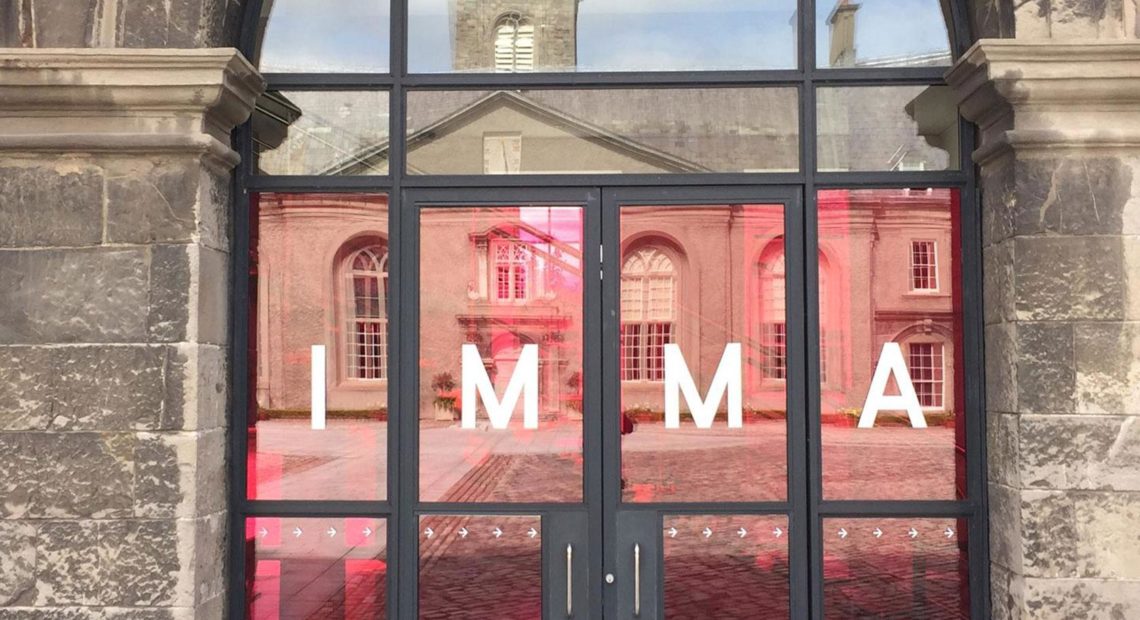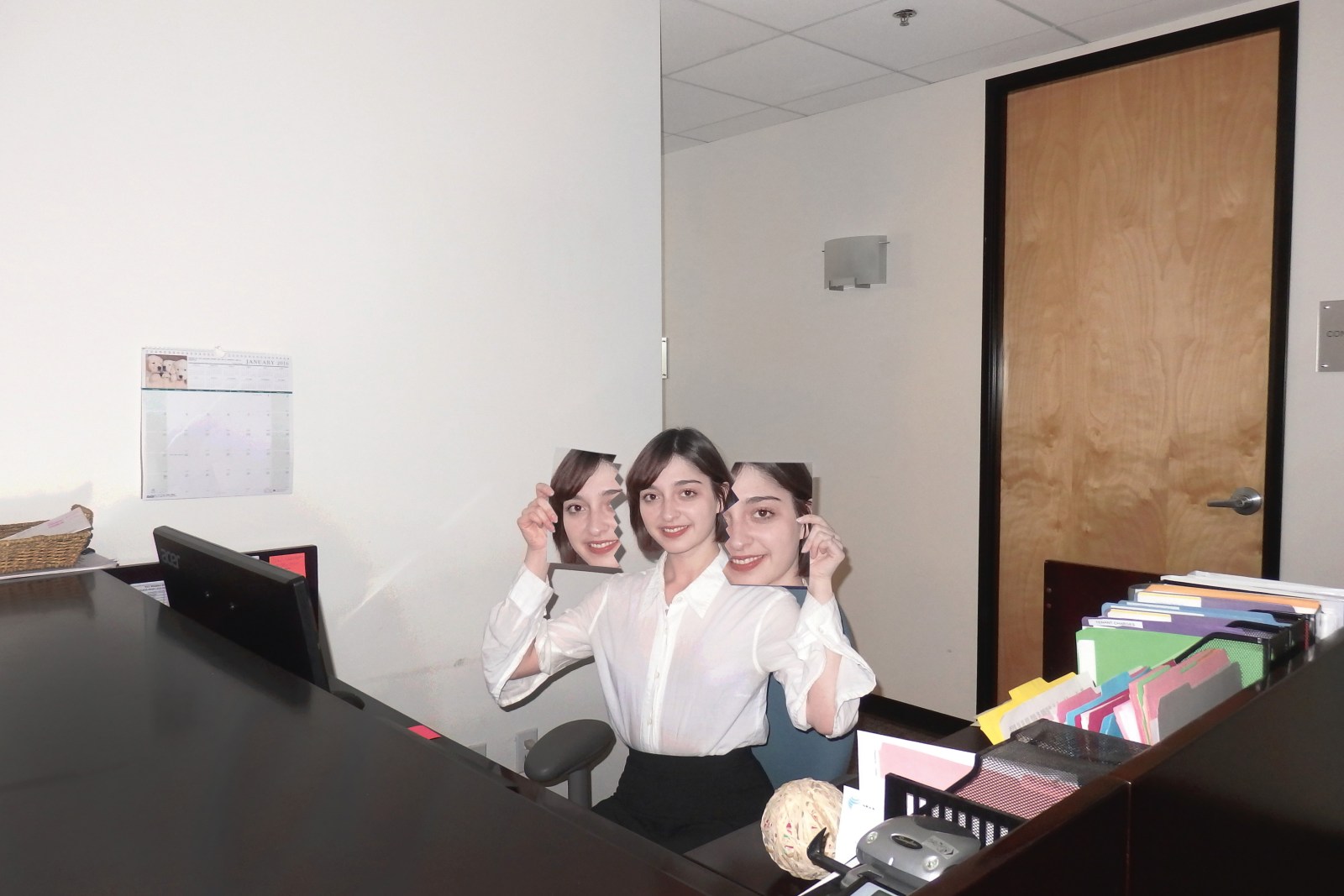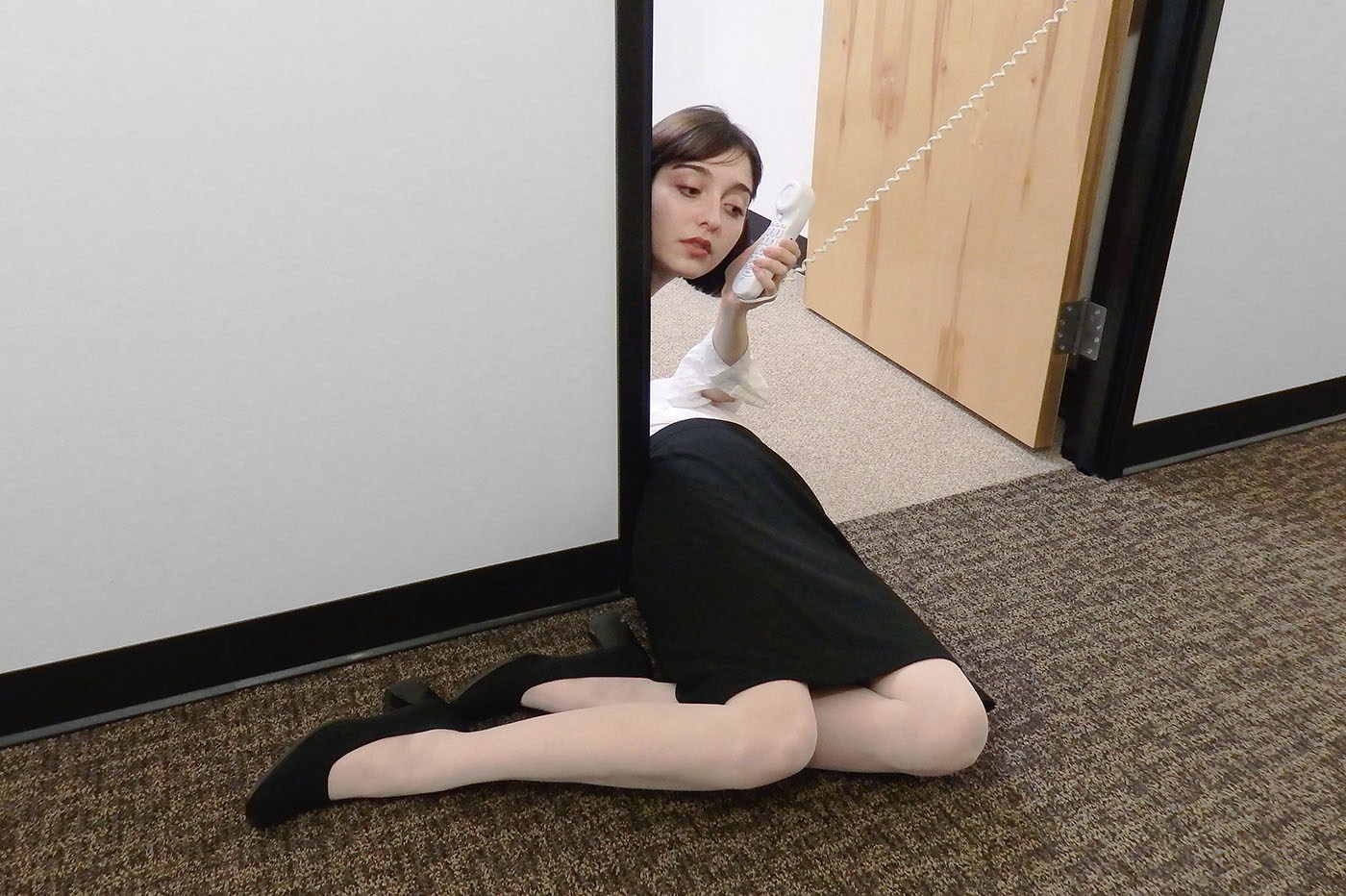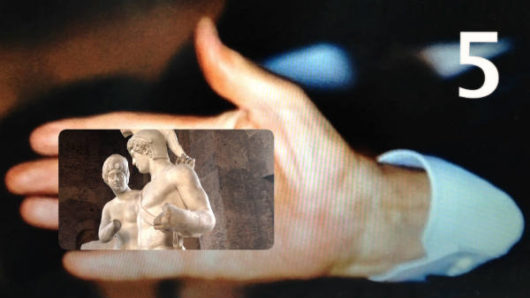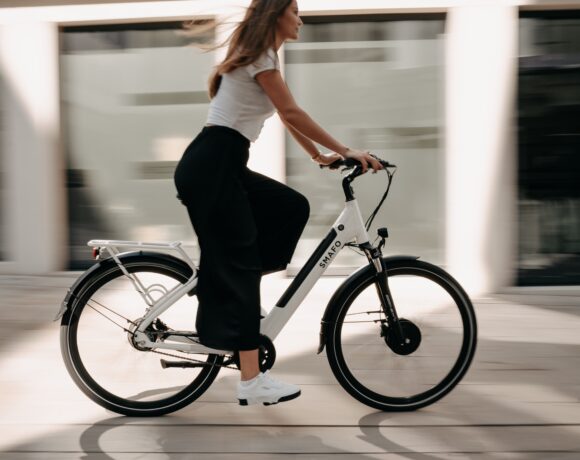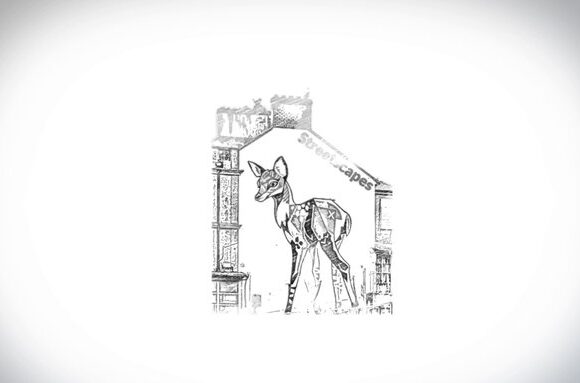The digital_self exhibition and public programme is a part of the Irish Museum of Modern Art’s (IMMA) Project Spaces Initiative, promoting artistic and curatorial experimentation and research.
The project in its entirety poses the question; how do digital technologies impact our daily lives?
Through photography, video and web artworks, digital interventions, talks, workshops and selected readings, digital_self explores how the self is performed, promoted and exposed by a digital generation now accustomed to mediating their private and public lives online. The project and talks run until the 25th of February, 2018.
The Council Journal talks to Sophie Byrne, curator of digital_self.
In your own words, what is ‘digital_self’ about? What are the key themes and backgrounds to the exhibition and programme?
The digital_self project and forthcoming public programme really looks at our changing relationship to technology and what this means for our sense of self, both as an individual and being part of global virtual community. The programmes themes builds on our continued fascination with our own image, a long-standing tradition in the history of the visual arts –propelled more recently by social media platforms and the selfie generation – which has exaggerated all forms
of how we the self is represented, shared and understood by the current digital orientated generation. This raises many questions of intimacy, authenticity, narcissism, and the private /public, all come into play when exploring the subject of digital self, more in depthly in the visual arts.
The background context at IMMA for curating the digital_self project now – is having on site in the galleries the visceral selfportraits by one of the most well know portrait painters – Lucian Freud, paired by a different approach to self-portraiture by the Canadian artists Rodney Graham, also on show. This
offered a valuable opportunity to consider what a self-portrait looks like in the current age of the internet, and its shifts on its aesthetics but also its cultural, social and psychological functioning.
While visual expressions of the self, has evolved beyond the figurative throughout 20th/21st century art history and practice, they are a symptom of what technology is available to artists at any given time. The project draws on more abstracted and performed notions of the self in other disciplines – such as on the ground-breaking writings in 1950s by the most influential American sociologist and writer Irvine Goffman, whose research/ book ‘The Presentation of Self in Everyday Life is a 1956’ use of theatre framework to address the multiplicity of the self as a complex entity we perform and conform to meet specific social
situations.
Goffman’s ideas came at a time when artists were turning to live performance and the everyday, to conceive new ideas of what art could be. His writings are certainly worth revisiting and fundamentally still holds up to new research findings by social psychologists studying the deeper effects of our use of technology and the internet on us. Off the top of my head, todays researchers that are pioneering new studies on the relationship between the self and internet, have greatly influenced my thinking in terms of developing this project. Some of whom include social psychologists and web researchers – Sherry Turkle, Christine Hine, Aaron Balick, Alex Krotoski, Qi Wang, have all anchored themes we hope to explore over the course of the public programme of talks, workshops and online projects.
What were the challenges in putting together digital_self?
I should mention the digital_self is a project and activated programme of live talks and events, in contrast to an exhibition template in the conventional gallery sense. It’s part of IMMA’s ongoing Project Spaces Initiative that promotes artistic and curatorial experimentation and research and stems from a strong learning ethos at the museum.
Concepts of the self is such a complex field of study spanning philosophy, art, psychology and sociology and combining this with wider burgeoning theories and findings on digital culture is a daunting task to research when devising a public programme that engages a wide museum audience that is cross generational who bring a different expertise.
The artists projects you find in the Project Spaces were selected for their discursive potential in provoking conversation on key themes of debate concerning how artists are using the internet as a medium and as content for making and disseminating their work – where of arc of this specific art story is hinged on self-representation that occurs across image, data and text.
The challenges with putting the digital_self project together is similar to the issues facing most art curators – time – budget – venue nuances – access to artists and their work etc, are all part of a fine balancing act in trying to realise a project, and its narrative of enquiry in accessible and engaging ways.
Specific to digital_self, the challenges were mostly to do with presenting web-based artists projects in the gallery context and whether this shift from a virtual presence online to a physical situation of a gallery alters our experience and expectations of the artist work in question. A thematic of the programme will attempt to complement and address online in various discursive and art iterations.
What lessons did you learn/ are you learning from digital_self?
The project has opened up many questions and curiosities – around how artists think and make work today. What’s fascinating and I’ve learned in researching a variety of artists work, (not all could be featured) is how the interface between our private and physical worlds are in constant negotiation with using
wireless handheld devices that we carry with us all the time.
It’s quite outstanding how the solitary or private activities such as writing personnel diary or creative journal of the artist is something now shared globally and instantaneously at a click of a button. It’s the intersections between subjectivity, criticality and authenticity of an experience that artists
are skillfully addressing in their work, and bringing to the wider discussions on how use of the technology and internet is changing us. This continues to be an aspect that I learn from artists’ research and creative ideas.
Could you tell the reader a bit about what they can expect from the exhibition and talks/ examples of the artists work’s being showcased?
Given the subject is so big – the project and programme offers a snapshot of artists working pre and post the birth of the internet (1960s – 2018), and mainly features video works, performance, photography and archive films. We trace the integration of art, technology and internet processes over time through a selection of projects by Irish and international artists.
Specific works include: Archive Films of the landmark 9 Evenings performances of Experiments in Art and Technology (E.A.T : Julie Martin & Billy Klüver (E.A.T), produced in 1966. The seminal 9 Evenings films on show feature performances by 10 major artists (Robert Rauschenberg, John Cage, David Tudor, Yvonne Rainer, Deborah Hay, Robert Whitman, Steve Paxton, Alex Hay, Lucinda Childs and Öyvind Fahlström) and 30 bell laboratory engineers from America’s major telephone company at a time when the first internet networks were being developed. This was pivotal moment in contemporary art practice, revolutionising how artists where circumventing the gallery to make work, as well as collaborating with engineers to conceive new possibilities in art and technology.
The E.A.T New York collective was quite utopian with their views on technology and the artists as catalyst for change – but they paved the way for a new digital age, and the 1966 event is now considered a turning point in media art and institutional critique of the museum.
Almost 50 years on – the DS project features more recent web-based video performances by American artists who use YouTube platforms to meet audiences on their own terms – and their web cam performances have now gone viral. You will see two internet phenomena personalities – Molly Soda and Jayson Scott Musson/ Young Hennessy. The later plays with double parody of hip hop culture and contemporary art and takes the form of YouTube D.I.Y videos on how to become a successful artist, in his internet talk series, Art Thoughtz. An internet kitsch aesthetic also comes through in Molly Soda’s webcam performances and confessional videos created in her bedroom/studio, and demonstrates the vulnerability of the performer online, seeking confirmation from a mass anonymous and often voyeuristic web
audience. Sometimes her web-based work can make for uncomfortable watching, such as “wrong, wrong, wrong 2015” that’s on show – calling us to reflect on our ethics as web users/viewers/followers.
Theresa Nanigian’s “Not Sorry” large scale photograph, offers a celebration of youth culture, through life size documentation of teenagers bedrooms – which she describes as portraits of someone’s true character behind the scenes in contrast to the ideal self we present online.
The social pressures of constantly living a perfect life online is central to the work of the Instagram sensation artist, Amalia Ulman, who plays with female stereotypes perpetuated by social media platforms. This inspired her year-long Instagram performance Privilege, 2016 which plays with our perceptions of status, truth and identity that we constantly manipulate for our second self that is presented online, which in turn is influenced by generic internet memes and lifestyle celebrity bloggers.
Also featured in the video projections, that includes a wonderful video work, is Marte e Venere – A Handheld Monument, 2013 by Johann Arens. This moving image artwork looks at artefact restoration and the complexities of representation, and how technology is also this but also our physical engagement and embodied experience of art objects and museums. In January 2018, this will be followed by a projection of Jonathan Mayhew’s, Different Thoughts Various Evenings 2017, which offers a poetic reflection on the human desire and need for self reflection and solitude in a world where we are constantly connected, yet alone.
Jonathan’s video work could also be described as a text poem that sources images from the visually saturated internet to remind us of our minuscule place in nature and the cosmos. The informal setting of IMMA Project Spaces offers visitors to relax and reflect on the ways the web is changing us, there are select
readings, talks from IMMA audio archive and talks by other specialists that will explore how the internet is also transforming how we engage with art, and what this means for our sense of self, online and offline.

Steve Paxton, Physical Things, 1966.
Performance at 9 Evenings Theatre and
Engineering The 69th Regiment Armory, New
York, October 13-19, 1966.
Eilis McDonald’s In my dream i called myself is being added to the exhibition in February is that right?
Yes, his project is in development, and will explore the artist’s ideas on her fractured self online across various social media platforms in which to explore role play, identity and branding. Visit the IMMA website for information, where the project will be launched in Feb 2018.
What piece of work stands out to you specifically in this exhibition and why?
No one artist or artwork can capture such a complex story of the self in the digital age, each artists’ work brings a specific perspective to the project themes that we hope our audience will enjoy and look deeper.
How do you think digital has transformed our daily lives? Is it a force for good or bad?
There are so many well informed experts that could offer more considered views on this – some of who I’ve mentioned earlier. Though I think anyone can’t take a binary position or perspectives on this since we all rely on technology and internet to conduct our daily lives and interactions – now whether willing or
unwillingly we all have a digital profile or self.
I can only offer my personal perspective and I suspect my views are similar to the majority of us reliant on the web to work, connect with family and friends, as well as discover new ideas and think creatively as someone working in the visual arts sector. Web technologies have transformed how to connect with each other, our daily social behaviours and made global communities more accessible than they have ever been before. Though what artists and others are highlighting in their work now 25 years on from the phenomena of the web, that while technology brings so many positives to our lives – we could benefit from being more
critically aware that technology cannot substitute or human need for real life face to face interaction, intimacy and real time conversations that are essential to our development and growth as evolving human beings.
The potential of the museum and gallery to nurture this is huge. The physical experience of coming to the gallery by yourself or with a friend offers a valuable moment to pause and self-reflect in a fast-paced technological society.
We have some great talks and events coming up in the digital_self programme that runs until 25th Feb, so I’d urge your readers to come and visit the project and further engage in the conversations in early 2018.
digital_self is curated by Sophie Byrne, Assistant Curator, Talks and Public Programmes at IMMA and runs until Sunday 25th of February 2018. You can visit IMMA and their SoundCloud channel to hear past talks in the series.


